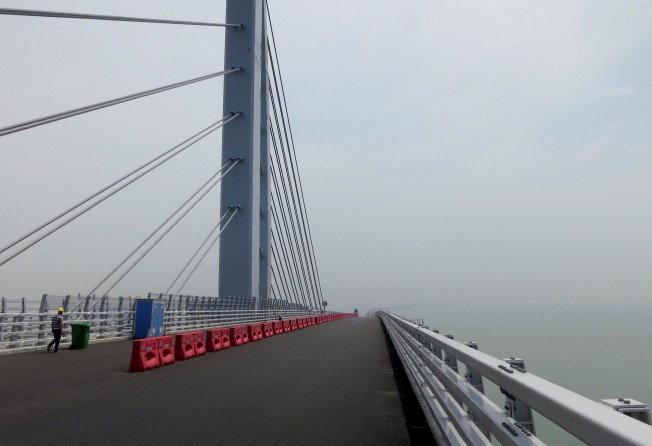Bridge safety is the primary concern
A corruption scandal has raised serious concerns over the Hong Kong-Zhuhai-Macau bridge. While there is pressure to finish the mega project on time, safety must not be compromised for the sake of speed and money

Hong Kong’s reputation as a showcase of civil engineering marvels has been called into question again. This time, a corruption scandal has raised serious safety concerns over the Hong Kong-Zhuhai-Macau bridge, the world’s longest tunnel-bridge structure being built across the Pearl River Delta. It is imperative for the government to ensure that the bridge will be safe and that those involved are brought to justice.
Compared to previous problems like cost overruns, construction delays and even fatal accidents, the latest issues unearthed by graft-busters are potentially more damaging. Twenty-one employees of a government contractor allegedly faked concrete inspection results by switching samples and falsifying the actual time frame of the tests. Their arrests were announced by the Independent Commission Against Corruption (ICAC) on Tuesday, after the Civil Engineering and Development Department (CEDD) noticed irregularities last year.
Officials have quickly sought to dispel public concerns, referring to the results of a series of safety tests conducted by the government so far. But given the gravity of the problem, the public is entitled to be given further assurance. This includes doing more thorough examinations at different parts of the bridge, such as taking concrete samples from the structure for more stringent safety checks.
As in the case of previous controversies involving public work projects, the government has done a bad job in keeping the public informed of the latest situation. This was reflected in the confusion arising from the press conference jointly held by works departments on Thursday. Officials admitted that they were still unable to tell the scale of the problem at this stage.
It is regrettable that other key questions were also unanswered. For instance, why did it take more than a year for the CEDD to unearth irregularities in the timing of the test results? Why did it fail to notice the use of fake samples in the tests, only being alerted to the problem by the ICAC last week? More importantly, on what basis did the government allow construction to go on? What measures have been taken to enhance the structural safety of the bridge?
No less discomforting is the government’s intention to complete the bridge by the end of the year as scheduled. Understandably, there is pressure to finish the mega project on time. After all, it has been more than seven years since work began.
But officials should avoid giving the wrong impression that safety may be compromised for the sake of speed and money. At stake is not just our engineering credentials. Ensuring the safety of the bridge must be the priority.